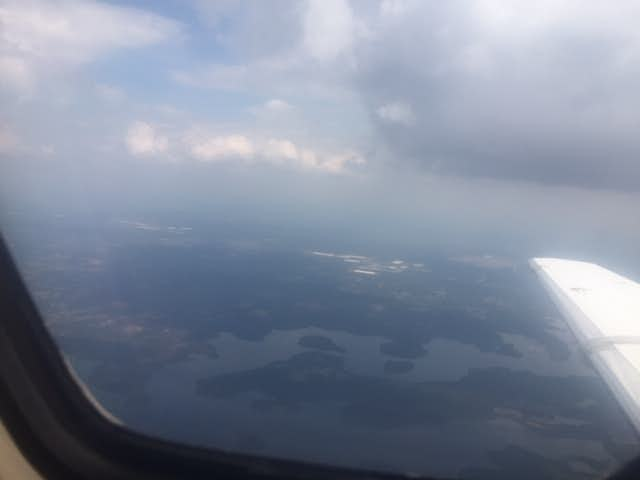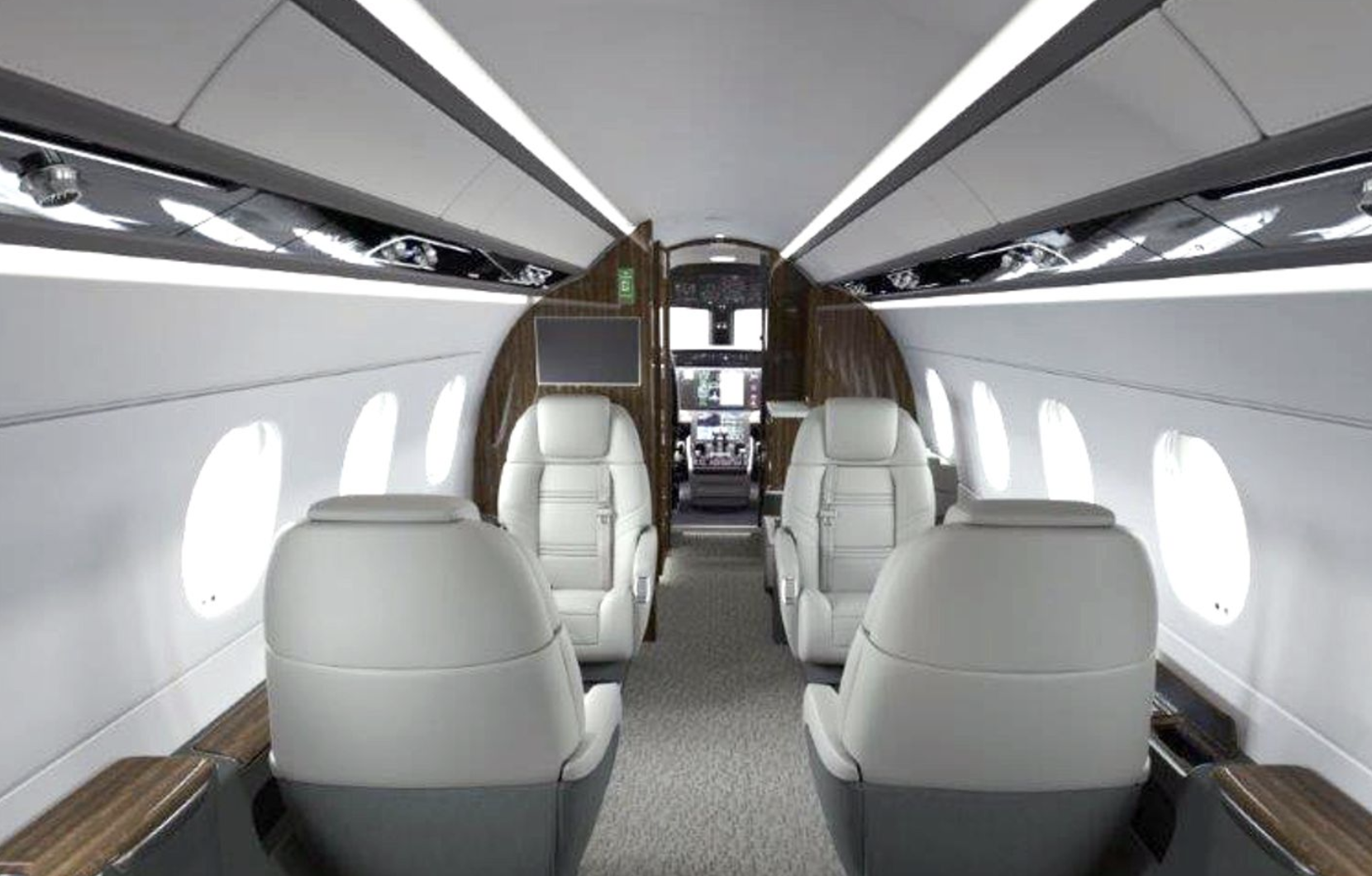On-Demand Charter, Jet Cards, Jet Sharing or Fractional Ownership?
Research from McKinsey suggests only one in 10 U.S. households and businesses that can afford to fly privately had been doing so prior to the COVID-19 Coronavirus pandemic. That puts more than one million targets in the addressable market for sellers of private jet solutions.
Another analysis shows private aviation, with its separate, low-traffic terminals, and the ability to avoid lines to check baggage, pass through security and board, makes Covid-19 contact risk 30 times lower than the airlines.
Business aviation companies have instituted a whole host of precautions to provide even higher standards of health hygiene. They include multiple times daily temperature checks for pilots and special anti-bacterial treatments for aircraft. NetJets is spending over $1 million per month keeping aircraft “clean and virus-free.” NetJets and Flexjet are using their own fleets to shuttle pilots to and from duty tours.
Private Jet Interest Surges
As you may have read, multiple players are already reporting a surge in interest and new customers.
Sentient Jet is a major seller of jets cards. It reported of the over 5,000 flight hours sold from the beginning of April through the middle of May, more than 50% were to new customers.
NetJets offers fractional shares, leases, and jet cards. It says first-time customers last month more than doubled typical May volume. The world’s largest operator of private jets says business flowered into its biggest month since December 2007, its previous record.
Air Partner, which sells jet cards and on-demand charters, said requests for private flights jumped 210% in May.
Private Jet Card Comparisons is the only independent buyer’s guide on the market. Unlike lead generation sites, we do not sell subscriber contact information or take referral fees from jet companies.
In addition to comparing over 50 jet card membership providers and more than 250 programs by over 65 variables, we also offer a vetted list of on-demand private jet charter brokers. In addition to publishing a new guide each year, since January we’ve made over 25 updates.
With the surge in interest from new to the market consumers, this free online guide will enable you to begin the search process with the basic knowledge that will make you a smarter buyer.
Of course, if you want to compare provider policies and rules to find the ones that best fit your needs, including comparing price for specific trips, we invite you to subscribe to our paid service which is only $500.
Where should you start?
The first place to start is estimating how many flight hours you expect to need in the next 12 to 18 months. If you aren’t sure about flight times, use our Online Private Jet Flight Time Calculator.
As a rule of thumb, if you expect to fly under 10 hours, on-demand charters could be the best option. From 10 to 100 hours, there are over 50 providers offering jet cards and membership programs.
Fractional share providers typically require at least 50 hours per year, and most contracts last between three to five years. There are only a handful of national providers, however, NetJets and Flexjet together controlling over 80% of the market.
On-Demand Charter
On-demand charter allows you to book flights one-by-one. Each trip is priced individually, which is referred to as dynamic pricing. Some jet cards also use dynamic pricing. The main difference is that they typically include service recovery guarantees and guaranteed availability. Some also offer catering credits.
Be Warned: If your flight is canceled at the last minute due to a mechanical or the pilot is sick, you will have to pay the difference if the replacement charter costs more. Also, make sure to review all quotes in detail. Two similar aircraft from the same operator might have different terms, including payment terms and cancelation penalties, pets policies, and so forth. More on that in “Who Owns The Private Jets” section below?
PJCC Tip: A top-notch broker is like gold. He or she will know the operators and who are dependable. They keep track of changes such as management and fleet turnover that might indicate problems long-before the rating agencies. They also will track potential back-up aircraft in case something goes wrong.
Jet Cards and Memberships
Jet Cards and Memberships provide many of the benefits as full or fractional ownership. You can join various programs for as little as $25,000. Some programs enable you to pick a specific aircraft type. Others sell using cabin category, typically light, midsize, super-midsize, and large jets, sometimes referred to as heavy jets. Many programs allow you to switch between jet types or categories, although some charge an interchange fee.
Programs work best for those who spend between $50,000 and $500,000 per year or are flying at least 10 hours per year. Many card programs offer fixed one-way hourly rates and guaranteed availability. That means if you reserve your flight outside the booking deadline, you are guaranteed a contracted price. It also means you don’t have to pay for ferry flights. Those are called empty legs. These flights get the plane to you, or back to base after you are done.
You’ll save time with jet cards because you won’t have to gather quotes and review options each time. You get service recovery guarantees, and your program will provide aircraft that meet contractual standards (which vary, so make sure to review before you buy).
Be Warned: While one typically believes buying in bulk means lower prices, and you will get better rates if you buy 50 hours than 25 hours, trip prices aren’t necessarily lower than on-demand charter, although on average they will likely end up in the same ballpark.
PJCC Tip: Read our article “36 Questions You Should Ask Before Buying Into A Private Jet Card Program.” Also read, “On-Demand Charter vs. Jet Card, the Pros and Cons.”
Fractional Ownership and Leases
Fractional Ownership generally requires purchasing 50 hours of annual flight time for three to five years.
You buy into a specific aircraft type. Programs allow you to fly other types in their fleets. Fractional ownership and leases work best if your flight patterns will remain consistent over the duration of your contract.
With fractional ownership, you buy a share of the aircraft, with a full share pegged at 800 hours. So if you are buying a quarter share (200 hours) of a $20 million private jet, you would pay $5 million. When your contract ends, you get what’s called the residual value back. That’s the value of your aircraft at that time. Think at least a 50% reduction.
Additionally, you pay a monthly management fee and then a fixed hourly flight cost, plus variable fuel surcharge. There can be other minor fees as well.
Lead time for reserving or canceling a flight can be as little as four hours, so fractional ownership provides more flexibility than jet cards, where most programs require at least 24 hours to change or cancel your flight without penalty.
Beware: You won’t know your true fully-loaded hourly costs until your contract ends and you find out the residual value of your share purchase. Then you can add in the monthly management charges, the difference between purchase and sale price, and other expenses. Also, if you go three or four months without flying, you still pay the monthly management fee.
PJCC Tip: Read our free Guide to Fractional Ownership and Leases.
Private Jet Sharing
Cost to fly privately where you have the entire aircraft to yourself typically runs $4,000 to $20,000 per hour. That’s based on type of jet, where you are flying and when.
Many first-timers want to just buy a seat or share. There are limited options, with Wheels Up, XO, and Jet Linx being the major national players. You can compare their offerings in this article.
Who owns the private jets?
If you charter or buy jet cards, in the U.S. all flights will be operated by companies that hold a Part 135 certificate.
The actual aircraft may be owned by that operator. In other cases, they will be managed aircraft. That means the owner of that aircraft has contracted with the operator to manage his or her airplane and offers it on the charter market when they aren’t using it. Lastly, they could come from a fractional fleet operator.
Fractional fleet operators primarily use their own fleets. However, during periods of high demand, or if they can’t get one of their fleet into position for your trip, they will go off-fleet, which simply means they are contracting with a Part 135 operator for that flight.
What type of aircraft can I charter?
There are over 150 aircraft types that are part of fractional and jet card programs or that you can charter on-demand.
There are three recognized categories of jets: Light, Midsize, and Large or Heavy Jets, which include ultra-long-range private jets. Other sub-categories include Super Midsize, which you will see frequently on various websites and Very Light Jets.
Categories are divided by maximum takeoff weight, although how providers categorize aircraft varies. For example, the Citation XLS is technically a midsize jet, however, NetJets sells it as a light jet.
In addition to on-demand, there are fractional and jet card programs that offer turboprops and piston aircraft. After two high-profile accidents last year that killed a European football star and a Russian billionaire, I wrote this article, which you may want to read.
PJCC Tip: Our Private Jet Performance Guide compares aircraft by range, speed, cabin size, and baggage capacity.
Should I charter from friends?
If your friend’s airplane is on a Part 135 certificate sure. If not, NO!!!!!! Illegal charters sound good until something happens. And if it does, those thousands of dollars of savings you are smiling about now could have you on the wrong end of a $100 million lawsuit, or worse.
Beware: Just because no cash is exchanged, doesn’t magically make everything legal. Yup, that includes trading a week in your Aspen house for a flight on your friend’s private jet.
PJCC Tip: Read “You might be running an illegal charter (and not know it).”
What information should I have before I contact a private jet provider?
Whether you are buying a jet card, a one-off charter, or looking at fractional ownership, having key information ready to share with providers will be critical to ensuring they propose the optimal solutions. Here’s a good list, in part from the National Business Aviation Association:
What is the origin and destination?
- In addition to origin and destination, think about the address where you are leaving from and where you are going. Private aviation accesses over 5,000 U.S. airports compared to less than 500 for the airlines. Your provider may suggest airports closer than the ones you are familiar with. Using these airports can often shave hours off each end of your trip. In booking on-demand, you will need to confirm airports at the time of reservation. With jet cards and fractional, you have the flexibility to change so long as you are outside the booking deadline.
Are your dates and times firm or do you have flexibility?
- Fractional programs and jet cards have peak days. In some cases, surcharges can be as high as 40% and there are longer deadlines for booking or canceling. Most providers also maintain the right to move your departure time by up to three hours. For on-demand charters, if you are traveling during high-demand periods, full payment may be required at the time of booking, and you may find you can’t cancel or move your flight after booking. Having the flexibility to move your flight even a day or two can often provide better pricing and terms.
- Think about how long you will be away. Jet cards offer discounts of up to 40% for qualifying roundtrips. That typically means at least two billable hours on consecutive days. A three-hour flight out on a Friday and three hours back Sunday would qualify. If you do a lot of these kinds of trips, for business or any reason, look into local operators with aircraft based at nearby airports.
How many passengers will be traveling?
- Know counts of both adults and children, and if there are folks who are a bit bigger, that’s good to know too. The range of private jets is impacted by not only the weather but weight. Children over age two will require their own seats just like the airlines. Some aircraft are certified to use the lavatory seat (Don’t worry it’s covered and cushioned) for passengers. It could be an acceptable option that enables you to use a smaller aircraft for short flights. Also, make sure to let your provider know if you will be traveling with special needs passengers.
Who and what will be traveling?
- Will you have pets, passengers with special needs, or oversize luggage? While there are no sizers like the airlines, there are constraints. They include being able to fit it through the door or into a baggage compartment. Some small aircraft have limited space. There are also weight issues, impacting the nonstop range. Also, not all private aircraft accept pets.
What type of experience are you looking for?
- Utility: While light jets often seat only six people, popular turboprops like the King Air 350i or Pilatus PC-12 can seat eight passengers. On flights under 300 miles, if you have eight people with eight golf bags, you might be able to save significant money by using a turboprop instead of having to charter a larger jet. Turboprops can also access airports with shorter runways. From Westchester County Airport to East Hampton on Long Island, the extra flying time on a turboprop is going to be less than 10 minutes.
- Comfort: While private jets will save you time and reduce exposure to Covid-19, light and midsize jets typically lack stand-up headroom. The cabin height for almost all light jets is under five feet. Some fliers choose larger cabin aircraft for space.
- Fine Dining: While some fractional and jet card programs include hot or cold meals, don’t count on more than packaged snacks, sodas, bottled water, coffee, and perhaps some minis for spirits or wine. If you want more than the basics, you can pay and order with your provider. Smaller jets aren’t likely to have the facilities for hot food.
- Flight Attendants: Very few folks have flight attendants except for large or perhaps super-midsize jets. Then again, if you are on a short flight or had just ordered sandwiches or cold plates, many fliers are content to serve themselves. Whether or not your program includes flight attendants is one of the over 65 variables paid subscribers can compare.
- Connectivity: Not all private jets have WiFi and with those that do, there are sometimes extra charges. If you need connectivity, tell your broker if you are chartering on-demand. WiFi guarantees vary between fractional and jet card providers, again, something we compare for over 250 programs.
- Lavatory: While virtually all types of airplanes you will find in the jet card and fractional programs have lavatories with a hard door, some light jets and turboprops only have a curtain or potty. You can easily stop at the FBO before or after your flight, but one reason super-midsize aircraft are popular is the stand-up cabin height makes the lav a little bit more comfortable should you need it.
PJCC Tip: Our Jet Card Decider service allows you to share your needs with us. Within 3 business days, we will provide you an analysis of which specific options and providers best fit your needs. It will save you hours and weeks of research.
What else should I be thinking about?
In addition to reducing exposure to Covid-19, you will find business aviation has many benefits. Here are 10 reasons once you start flying privately, you may never go back to the airlines.
Private Jet and Pilot Safety
While all operators need to meet government regulations, many run their businesses to a higher standard. You are probably also wondering about pilots. This article will give you all the questions you should ask.
Private Jet Glossary
From FBO (that’s a private jet terminal) to Interchange Fees and Taxi Time, our A to Z Private Jet Glossary will familiarize you with industry lingo in under five minutes.












